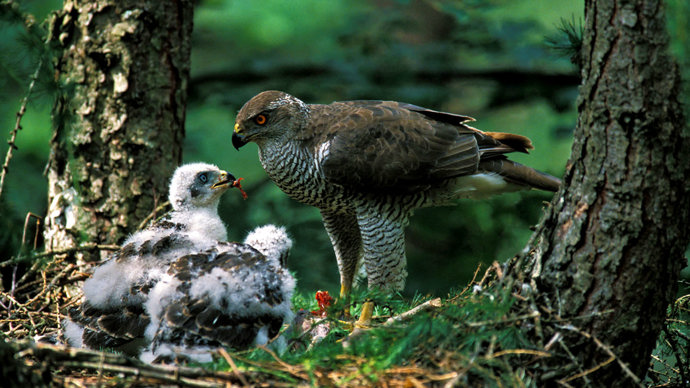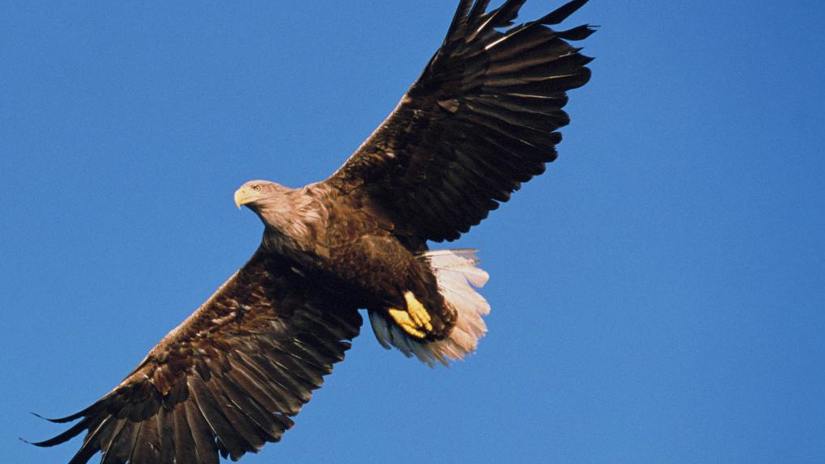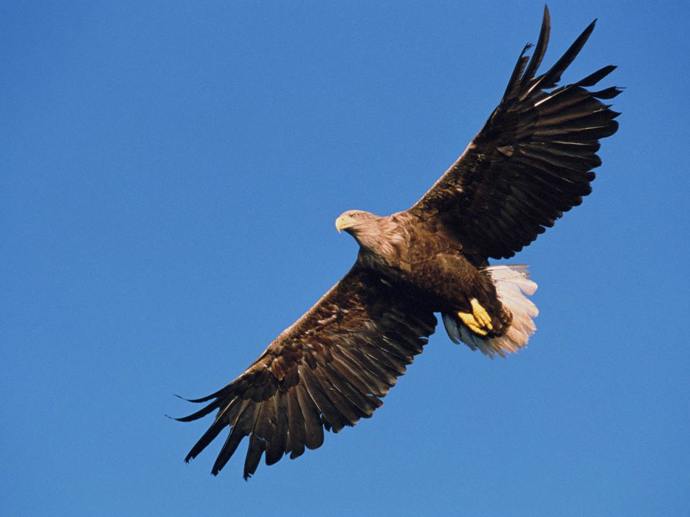Common name: goshawk
Scientific name: Accipiter gentilis
Family: Accipitridae (hawks and eagles)
Habitat: woodland, grassland
Diet: smaller birds, mammals, amphibians, reptiles
Predators: none
Origin: native
Back from the brink of extinction, the goshawk is the ultimate woodland predator. Its wings are tailor-made for weaving through trees and hunting almost anything it outsizes.
Common name: goshawk
Scientific name: Accipiter gentilis
Family: Accipitridae (hawks and eagles)
Habitat: woodland, grassland
Diet: smaller birds, mammals, amphibians, reptiles
Predators: none
Origin: native
The front of the goshawk's body is white and patterned with pale grey horizontal bars. Its head is primarily grey with a pale stripe across its distinctive, bright red eye.
Goshawks have broad wings which are grey on top and range from pale cream to white underneath. It has long yellow legs and sharp talons. They are large birds, roughly the same size as a buzzard. The female goshawk is larger than the male, and juveniles have brown feathers.
Not to be confused with: the sparrowhawk. It is much smaller, no more than half the size of a goshawk.

Credit: Tim Preston / WTML
A high-speed hunter that effortlessly weaves through its woodland home, the goshawk can take a wide variety of prey. Common food includes other birds, such as wood pigeons, corvids (members of the crow family) and game birds. Squirrels, rabbits and other mammals are also regularly taken.
It can take a female up to six days to lay a clutch of four eggs.
The goshawk's nest is built close to the trunk of a tree and reused for several years. Females stay in the nest while males hunt for food.
Young are raised between March and June. Between two and four eggs are laid per clutch.
Goshawk fledglings become independent after around three months. Before they leave the nest, they will engage in ‘branching’: spending time outside of the nest before they are strong enough to fly. They reach sexual maturity at two years old.

Credit: Blickwinkel / Alamy Stock Photo
The goshawk has a scattered population across the UK, with the greatest numbers in Wales and southern Scotland.
The name ‘goshawk’ comes from the Old English name ‘goose-hawk’.
The goshawk is famously elusive. Look for it in dense woodland and especially woods planted with conifers. Your best chance of spotting one is on a clear, fresh day between late winter and early spring, when the birds can be seen flying high over the trees as they perform their display flight to attract a mate.

Credit: Duncan Usher / Alamy Stock Photo
Goshawks were all but extinct as a breeding bird in the UK by the end of the 19th century due to loss of woodland habitat and persecution from gamekeepers. Deliberate and accidental reintroductions have seen the population slowly recover, with an estimated 542 birds in 2017. However, both habitat loss and persecution remain a threat.
As powerful predators, goshawks are often used for falconry. In the middle ages, only nobles were allowed to use them, hence their Latin name which means ‘noble hawk’.


Amy Lewis • 10 Sept 2021
Learn how to identify the UK's birds of prey with our quick guide to their calls, key features and likely hangouts.